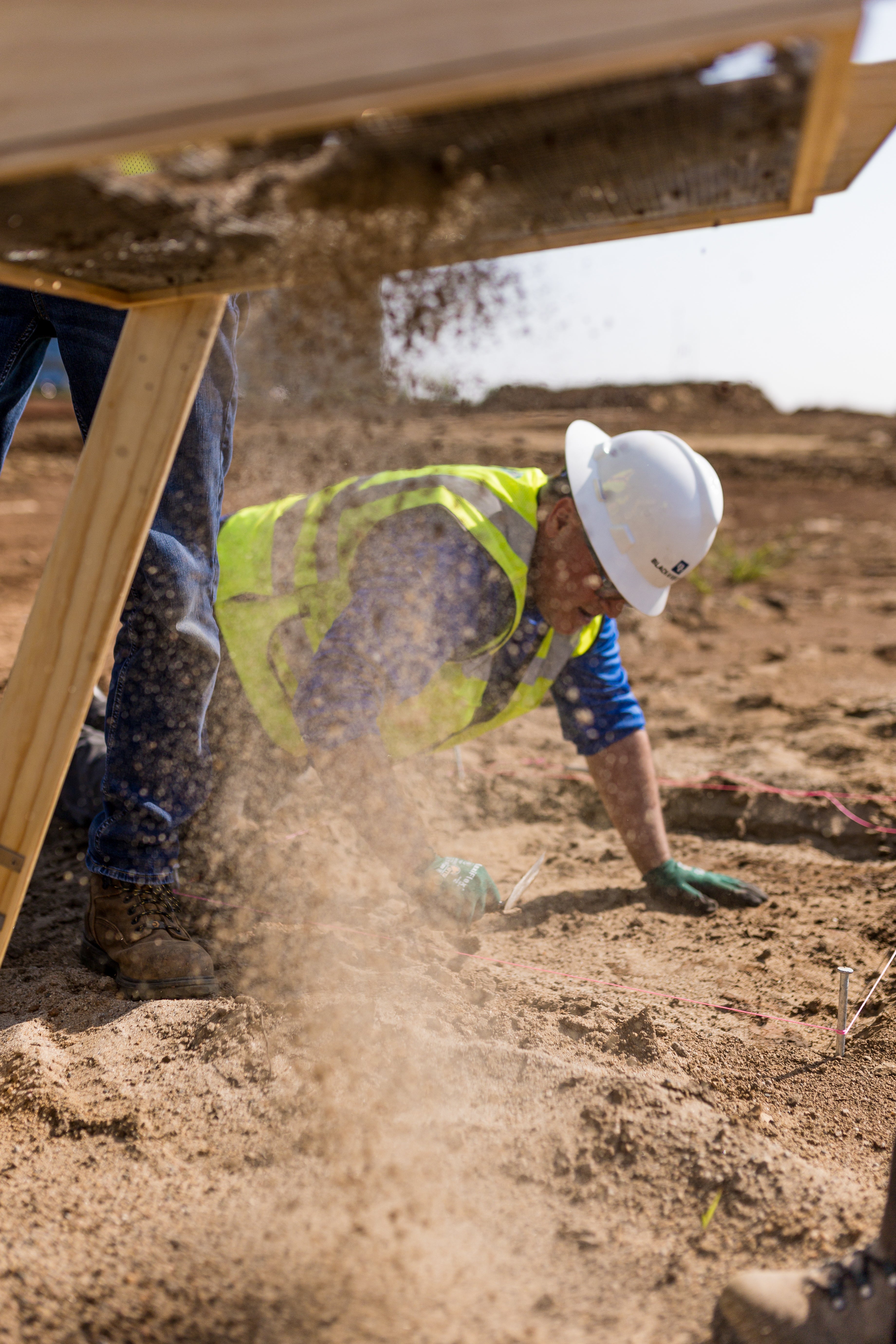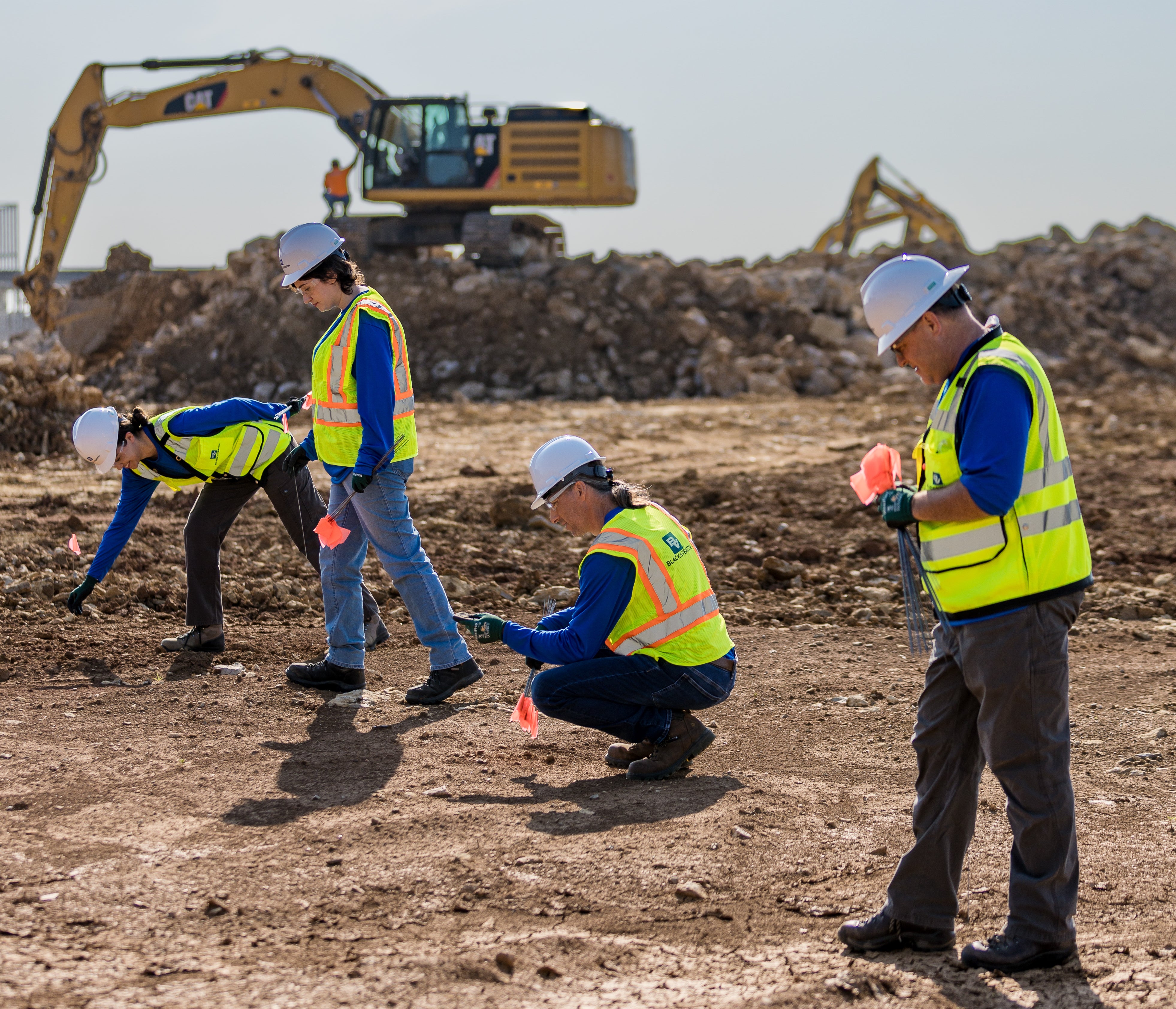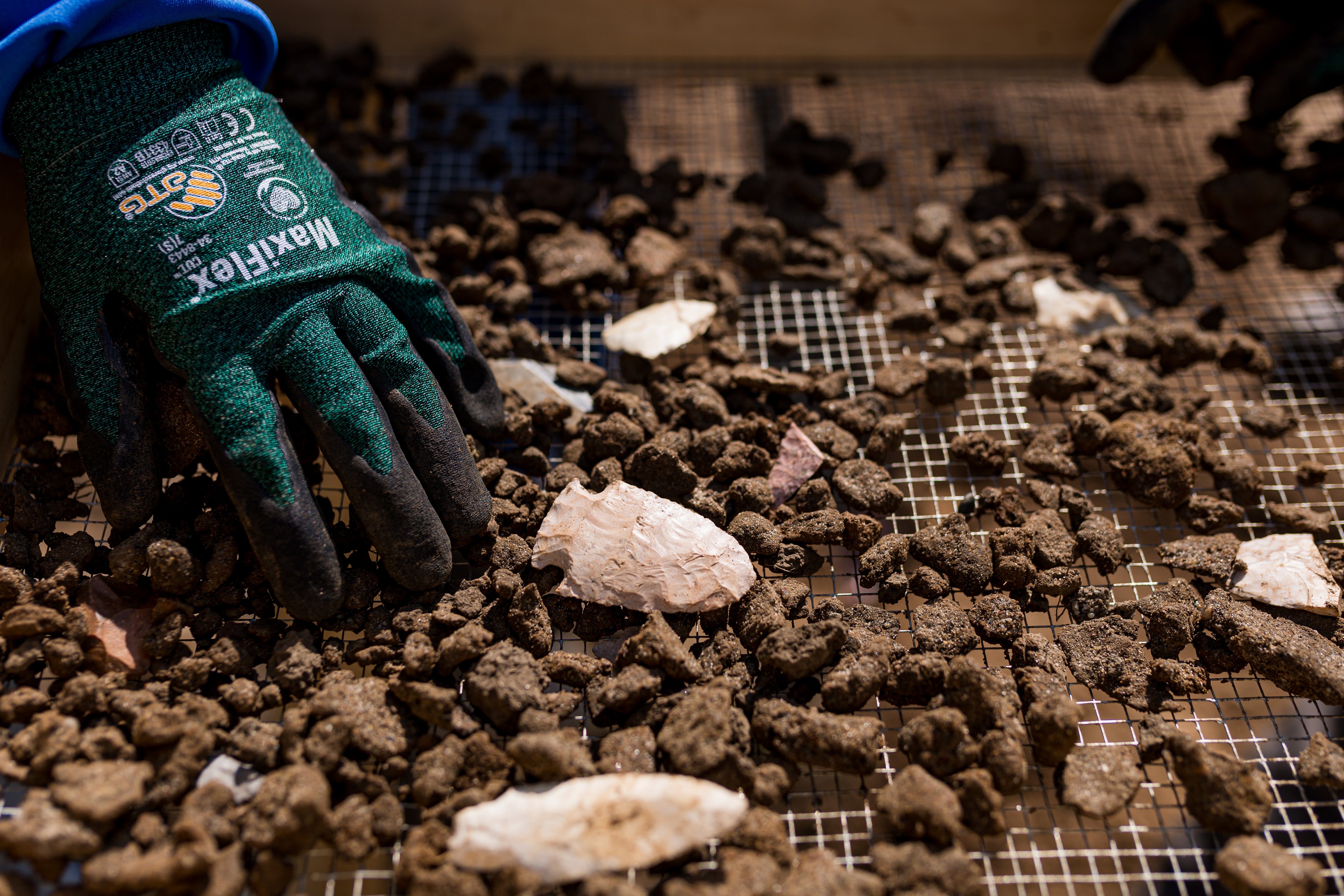In conversations about the brains and brawn behind highly visible power and water systems around the globe, Black & Veatch often comes to mind. But an in-house archaeological team is proving influential in finding what’s unseen below ground, unearthing and preserving hidden history before it’s all lost to bulldozers and concrete.
Those cultural resource specialists — five principal investigators, two full-time early career archaeological experts and a rotating group of temporary specialists — don’t draw much attention for their painstaking, gritty work in the dirt. But they embody the company’s breadth of services and its thoughtful balance of achieving project needs while being mindful of the rich history and cultural heritage in places its employee-owners work and live.
The team’s findings on proposed construction sites — everything from confirmations of unmarked graves to discoveries of previously unidentified historical structures and artifacts, some dating to 2500 B.C. — have swayed clients to adjust design plans to sensitively shift their projects away from those plots without disrupting the schedule.
“In Native American cultures, there's a general belief that where your ancestors used to be is a place where you can still connect with them, and if that place is excavated, it's gone. How do we put a price on that now that the site is going to be completely gone? How do we reconcile that?” said Jason Roberts, a Black & Veatch cultural resources manager who counts a child’s handprint — estimated to be 1,000 years old — among his prized finds.
We've had projects where we found a lot of great stuff, important significant sites and interesting things,” added Denise Pantzer, who like colleague Roberts has advanced archaeology degrees and literally decades in the field. “We can go days without finding anything, but then when we do, it's thrilling.”

Buried history ‘virtually anywhere’
The Black & Veatch team’s holistic offerings under the company’s environmental solutions business run the spectrum. Things like feasibility studies and due diligence reviews to artifact analyses, tribal consultation, archaeological and architectural history surveys and documentation, and construction monitoring and compliance. Ground-penetrating radar pinpoints leads, giving way to meticulous hand digging for artifacts that ultimately get carefully documented and either returned to landowners or sent to state-approved curators.
Ideally, the team is summoned at a project’s infancy, often in consultation with clients and engineering design professionals. Whenever federal funding or approvals are involved in a project, reviews for impacts on cultural resources are a must. Local and state regulations can require such assessments, and developers increasingly request due diligence as their commitment to environmental stewardship.
Not lost in any of it is that damage to an archaeological site may have legal fallout if not handled carefully, not to mention frayed relations with Native Americans if they’re not consulted or sacred grounds aren’t dignified.
For risk reduction, it’s a question of the unknowns for developers, Roberts said. “They’ll often say, ‘We don’t know if there’s anything buried out there that could be a showstopper, so let’s call in archaeologists to have a look.’ ” The fact is, he adds, “archaeological sites have the potential to be virtually anywhere.”

Heritage doesn’t have to be sacrificed in the name of progress”
In central Virginia, the Black & Veatch team was called in early in the planning stages of a proposed solar project and found a prehistoric archaeological site within the sprawling development’s footprint. Recovered, well-preserved artifacts included ceramics, projectile points and tools indicative of three distinct time periods, suggesting the site was occupied from about 2,500 B.C. to about 1,000 A.D.

Another time, the team got dispatched to a proposed data center site on Missouri farmland and found a red flag: evidence of a family homestead graveyard, the headstones piled at the bottom of a nearby hill. That area was spared from development.
At a planned data center complex in Virginia, a landowner reported a suspected small family cemetery — unregistered on any map or record — in woods near the ruins of a house leveled by Hurricane Sandy in 2012. While clearing out some bramble, the team found a grave marker listing six to eight names, along with ground depressions signifying burial plots. Rather than exhuming and reinterring those remains, developers dropped those parcels from their plans.
And then there’s that millennium-old handprint that Roberts uncovered in central Texas in what had been an ancient underground grain storage pit covered by logs and mud to fend off rodents. The unrelenting Texas sun had baked the impression into a ceramic.
“For me, it was super cool,” Roberts said.
Call it yet another reminder that cultural heritage doesn’t have to be sacrificed in the name of progress — and of the belief that projects should honor yesteryear’s stories embedded in the land while delivering tomorrow’s critical systems.
Contact Us
Looking for a partner in innovation?
Let's Talk

